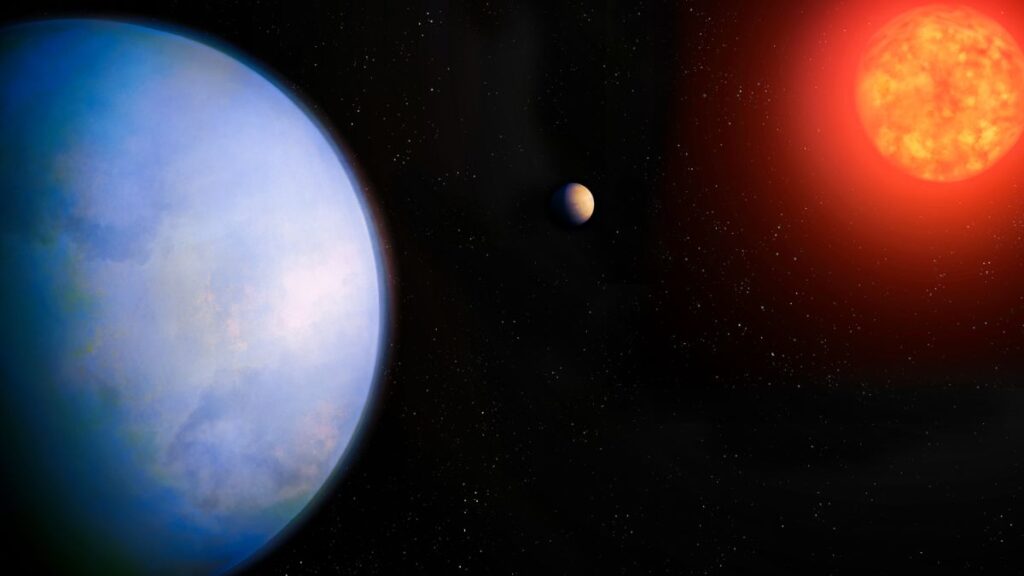
A newly identified exoplanet candidate, known as GJ 251c, has emerged as a significant find for scientists exploring potential extraterrestrial life. Located just 18 light-years from Earth, this super-Earth has a minimum mass approximately 3.84 times that of our planet and resides in its star’s habitable zone. This area is crucial for the possibility of life, as it allows for the existence of liquid water on the planet’s surface, assuming an appropriate atmosphere is present.
According to Suvrath Mahadevan, an astronomer at Pennsylvania State University, “The exoplanet is in the habitable or the ‘Goldilocks Zone,’ the right distance from its star that liquid water could exist on its surface.” This discovery aligns with ongoing efforts to identify planets that not only have rocky compositions similar to Earth but also exist at distances from their stars that permit life-sustaining conditions.
Exoplanets exhibiting these characteristics are relatively rare among the thousands cataloged to date. Paul Robertson of the University of California, Irvine, emphasized the significance of GJ 251c, noting its proximity: “Cosmically speaking, it’s practically next door.” GJ 251c orbits a red dwarf star, GJ 251, which is smaller and cooler than the Sun. This configuration allows the habitable zone to be closer to the star, facilitating the detection of planets with shorter orbits.
The discovery was made by a team of astronomers led by Corey Beard, who targeted GJ 251 to search for low-mass planets suitable for direct imaging. The star was already known to host an exoplanet, GJ 251b, which is 3.85 times the mass of Earth but orbits too close to the star to be habitable. The researchers utilized over two decades of data on GJ 251, complemented by new, high-resolution observations to analyze the star’s slight movements caused by gravitational interactions with orbiting planets.
Their findings revealed not only the known exoplanet but also evidence for GJ 251c, which has an orbital period of 53.6 days and is positioned within the habitable zone. Although initial measurements of its mass have been obtained, further observations are necessary to determine its diameter and other properties, as the planet does not transit its star.
Future observations hold promise for GJ 251c. Researchers believe that advancements in direct imaging technology will soon allow astronomers to study the exoplanet directly, rather than inferring its characteristics from its gravitational effects. Beard expressed optimism about this potential, stating, “We are at the cutting edge of technology and analysis methods with this system.”
Despite the exciting discovery, challenges remain. “While its discovery is quite statistically significant, we are still determining the status of the planet due to the uncertainty of our instruments and methods,” Beard added. The next generation of telescopes will play a crucial role in directly imaging GJ 251c, enabling scientists to confirm the presence of an atmosphere that could support liquid water.
Mahadevan reiterated the significance of GJ 251c for future exploration: “While we can’t yet confirm the presence of an atmosphere or life on GJ 251c, the planet represents a promising target for future exploration.” The research findings have been published in The Astronomical Journal, marking a notable advancement in the search for life beyond Earth and expanding our understanding of potentially habitable worlds.







